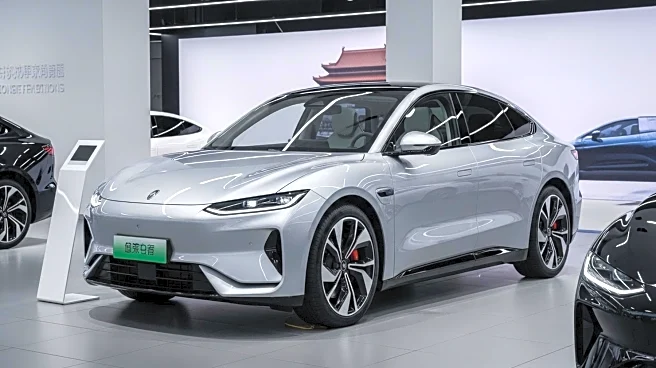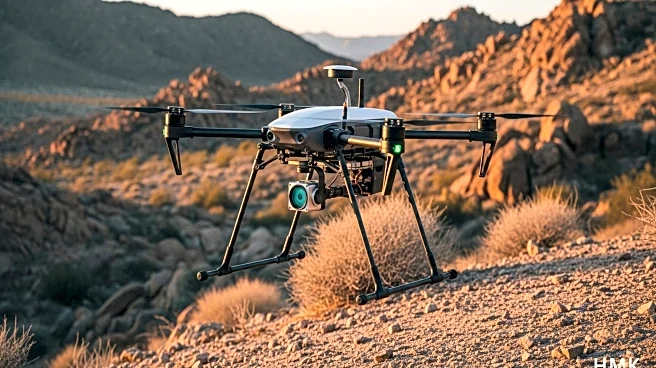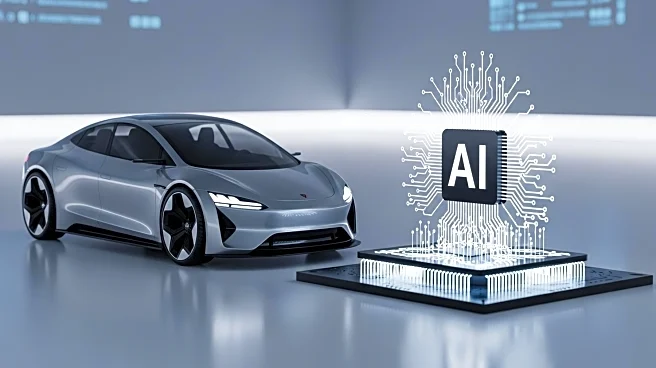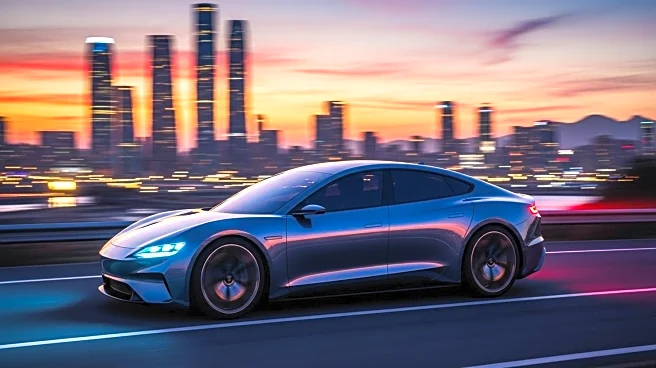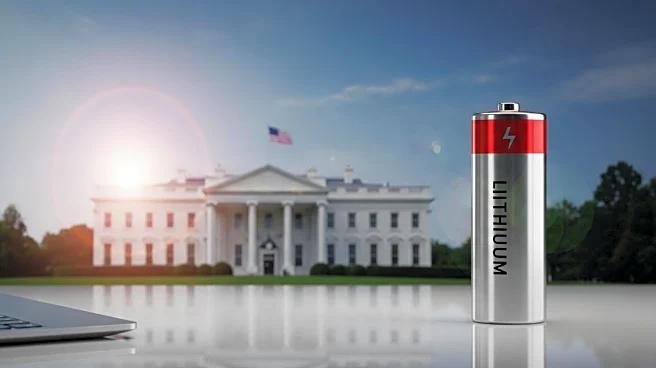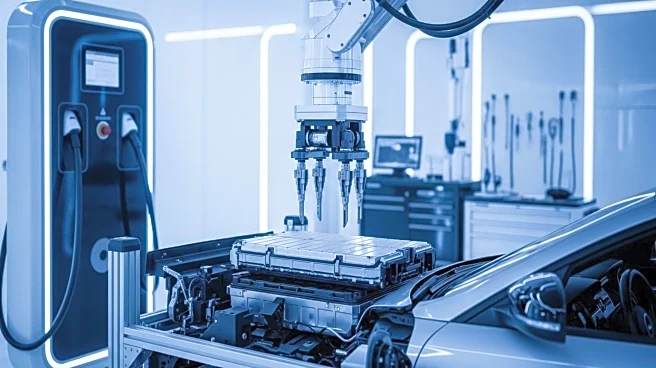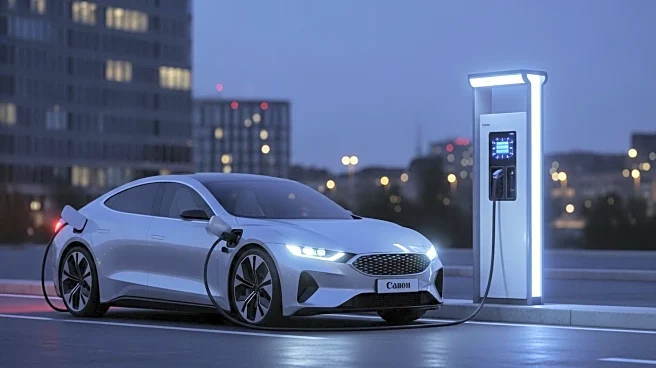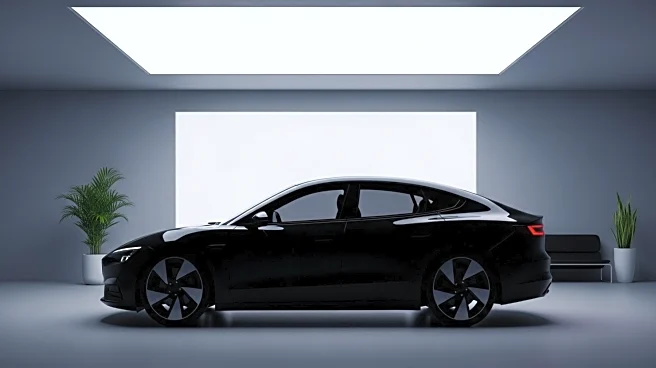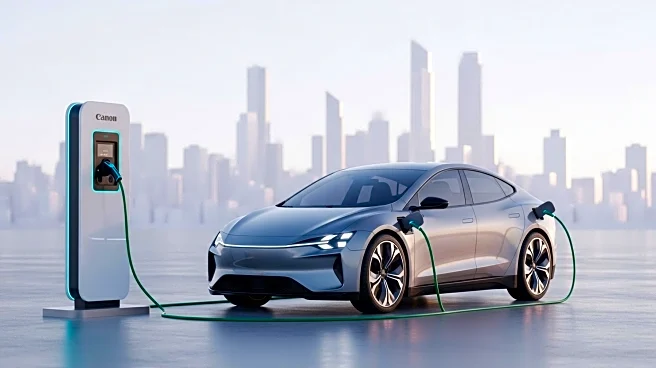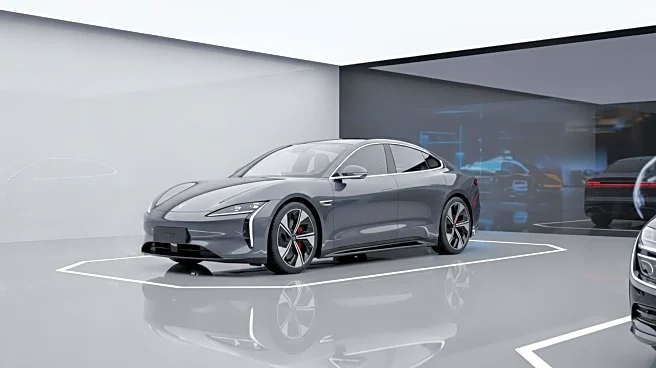What is the story about?
What's Happening?
Tesla has announced the development of a new, more affordable electric vehicle, expected to be a stripped-down variant of the Model Y crossover. This new model, internally coded as E41, is anticipated to start at a price range of $30,000 to $35,000, significantly lower than the current Model Y's entry price of approximately $45,000. Production is set to ramp up in late 2025, with first deliveries expected around the fourth quarter of 2025. This move is part of Tesla's strategy to broaden its market reach by offering a lower price point vehicle. The company is also planning to introduce other vehicles, including a second-generation Roadster sports car and an electric Semi truck, while expanding its autonomous ride-hailing service, the 'Cybercab'.
Why It's Important?
The introduction of a more affordable Tesla model is crucial as the company faces fierce competition from Chinese electric vehicle manufacturers and traditional automakers. By lowering the price point, Tesla aims to attract a broader customer base, potentially boosting sales and stabilizing deliveries. However, this strategy also risks cannibalizing sales of existing models like the Model 3 and Model Y. The move comes at a time when Tesla's sales have been declining, with the company posting its worst year-over-year delivery decline in a decade during Q2 2025. Analysts suggest that while the new model could help stem the decline, Tesla's future growth may also depend on its ambitious projects in autonomous driving and energy storage.
What's Next?
Tesla plans to start volume production of the new affordable model by late 2025, with deliveries expected to begin in the fourth quarter. The success of this launch will be critical for Tesla's short-term results, as investors are closely watching these developments. Additionally, Tesla is expanding its autonomous ride-hailing trials, having secured a permit in Nevada to test driverless vehicles. The company aims to have autonomous ride-hailing services in half of the U.S. population areas by the end of 2025. Tesla's focus on Full Self-Driving technology and robotaxis could add significant value to the company if successful, despite broader scrutiny of self-driving tech.
Beyond the Headlines
Tesla's strategy reflects a broader shift in the automotive industry towards more affordable electric vehicles, driven by increasing competition and changing consumer preferences. The company's emphasis on software, robotics, and energy storage highlights its diversification beyond traditional car manufacturing. However, the success of Tesla's new model and its autonomous driving initiatives will depend on regulatory approvals and consumer acceptance. As Tesla navigates these challenges, its ability to innovate and adapt will be crucial in maintaining its position as a leader in the electric vehicle market.
AI Generated Content
Do you find this article useful?
